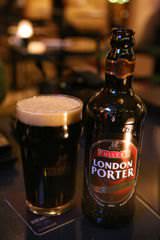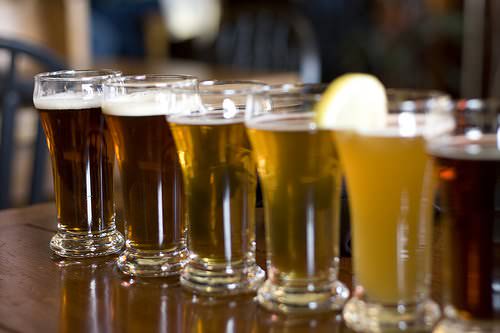Though both dark beers, stout is a stronger and more full-bodied variation of porter. Porter is well-hopped, made from brown malt, and descends from brown beer. Historically, the strongest porter beer was called a stout porter, but this was later shortened to "stout." A rough way to differentiate the two is that porter typically does not use roasted barley, which adds to bitterness, while stout almost always does.
Comparison chart
Taste
Porter is sweeter than stout, but whether a porter is sweet, or spicy and bitter, by itself depends on how dark its grain is and the malt and hops used. Generally, porter does not use roasted barley, but some may; when it does, it usually uses lighter-colored barley. Due to the use of roasted, darker barley, stout has deeper roasted notes than porter and often has a dry, bitter taste.
In the following video, Mark Szmaida, head brewer of the Chelsea Brewing Company, talks about common types of beer, the last two of which are porter and stout.
Brewing
Porter is usually brewed using malted barley, although a few varieties use unmalted roasted barley. Porter usually uses lighter grains of barley.
Stout is brewed with unmalted roasted barley, which adds a roasted, almost coffee-like flavor and dry bitterness to the beer. Stout usually uses the darkest grains of barley.
Varieties and Popular Brands
Porter comes in a range of varieties, including:
- London Porter: sweeter, less dry, sometimes has a subtle smokiness.
- American Porter: a more bitter hoppy flavor.
- Baltic Porter: Brewed in Northern Europe, it is sweeter, has more alcohol, and is often noted for its subtle flavors of sweet chocolate or plum.
Popular porter brands include Arcadia’s London Porter, Anchor Brewing Co.’s Anchor Porter, Samuel Smith’s The Famous Taddy Porter, and Fuller’s London Porter.
Varieties of stout include:
- Dry Stout: Stout in its purest form, with the dry, bitter flavor of roasted coffee. Popular brands include Guinness Stout, Murphy’s Irish Stout, and Beamish.
- Milk Stout or Sweet Stout: brewed with lactose, lower alcohol content than dry stout. Because lactose is not fermentable, it breaks down and settles as sugar, giving it a sweet taste. Popular brands include Samuel Adams Cream Stout, St. Peters Cream Stout, and Mother's Milk.
- Export Stout: a much stronger variation of dry or sweet stout, i.e., more bitter and higher alcohol content to withstand travel in export. Popular brands are Stone Imperial Russian Stout, Yeti Imperial Stout, or Siberian Night Imperial Stout.
- Oatmeal Stout: brewed with oatmeal, much sweeter and smoother than milk stout. Popular brands include Shakespeare Oatmeal Stout, Samuel Smith’s Oatmeal Stout, Barney Flats Oatmeal Stout, and Young’s Oatmeal Stout.
- Russian Imperial Stout: a specific and stronger kind of export stout, made specifically to withstand the long journey from England to Russia.
History
Porter originated in 18th century London; it was a blend of younger pale ales and older dark ales. (This practice eventually led to another term, "black and tan.") As they were originally made, porters had 6+% alcohol content and would be considered very strong beers by today's standards. They were popular not only for their flavor, but also because they did not spoil easily. Over the years, lighter-bodied porters became more popular, leaving the the more full-bodied, darker porters to be called stouts.
Stout was originally called “stout porter.” It was a version of a London pub drink that was created by London breweries and sold on a large scale. The word “porter” was eventually dropped from the name.
Today, the lines between what is considered a porter and what is considered a stout are very blurred. Both types of beer have roughly the same amount of alcohol content, and they may or may not use dark, roasted barley.






 Beer
Beer  Ale
Ale  Jack Daniel's
Jack Daniel's  Scotch
Scotch  Bourbon
Bourbon  Bar
Bar
Comments: Porter vs Stout